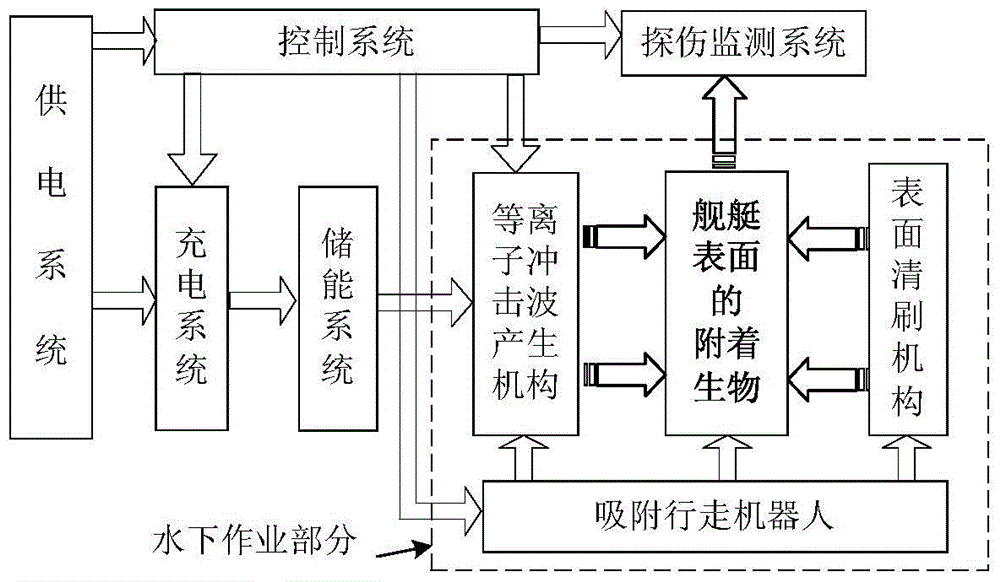Ship hull descaling and flaw detection system
A technology for ships and monitoring systems, applied in the field of automation systems, can solve the problems of lack of ship hull detection function, insufficient removal effect, corrosion of facilities and ships, etc., to achieve thorough and effective removal effect, good descaling effect, and operational efficiency. high effect
- Summary
- Abstract
- Description
- Claims
- Application Information
AI Technical Summary
Problems solved by technology
Method used
Image
Examples
Embodiment Construction
[0038] Below in conjunction with accompanying drawing, present embodiment is further described:
[0039] like figure 1 As shown, the ship shell descaling and flaw detection system in this embodiment includes a power supply system, a control system, a charging system, an energy storage system, a plasma shock wave generating mechanism, a flaw detection monitoring system, a surface cleaning mechanism, and an adsorption walking robot. In the system, the power supply system is connected to the control system and the charging system to provide energy for it. The whole system can be powered by the ship's own power system, or by the power supply on land, or an additional generator can be installed to supply power for the system alone. The power supply system is 220V / 50Hz.
[0040] The control system is composed of a central processing unit, a charging system control module, a plasma shock wave generating mechanism control module, an adsorption walking robot control module, a flaw de...
PUM
 Login to View More
Login to View More Abstract
Description
Claims
Application Information
 Login to View More
Login to View More - R&D
- Intellectual Property
- Life Sciences
- Materials
- Tech Scout
- Unparalleled Data Quality
- Higher Quality Content
- 60% Fewer Hallucinations
Browse by: Latest US Patents, China's latest patents, Technical Efficacy Thesaurus, Application Domain, Technology Topic, Popular Technical Reports.
© 2025 PatSnap. All rights reserved.Legal|Privacy policy|Modern Slavery Act Transparency Statement|Sitemap|About US| Contact US: help@patsnap.com



